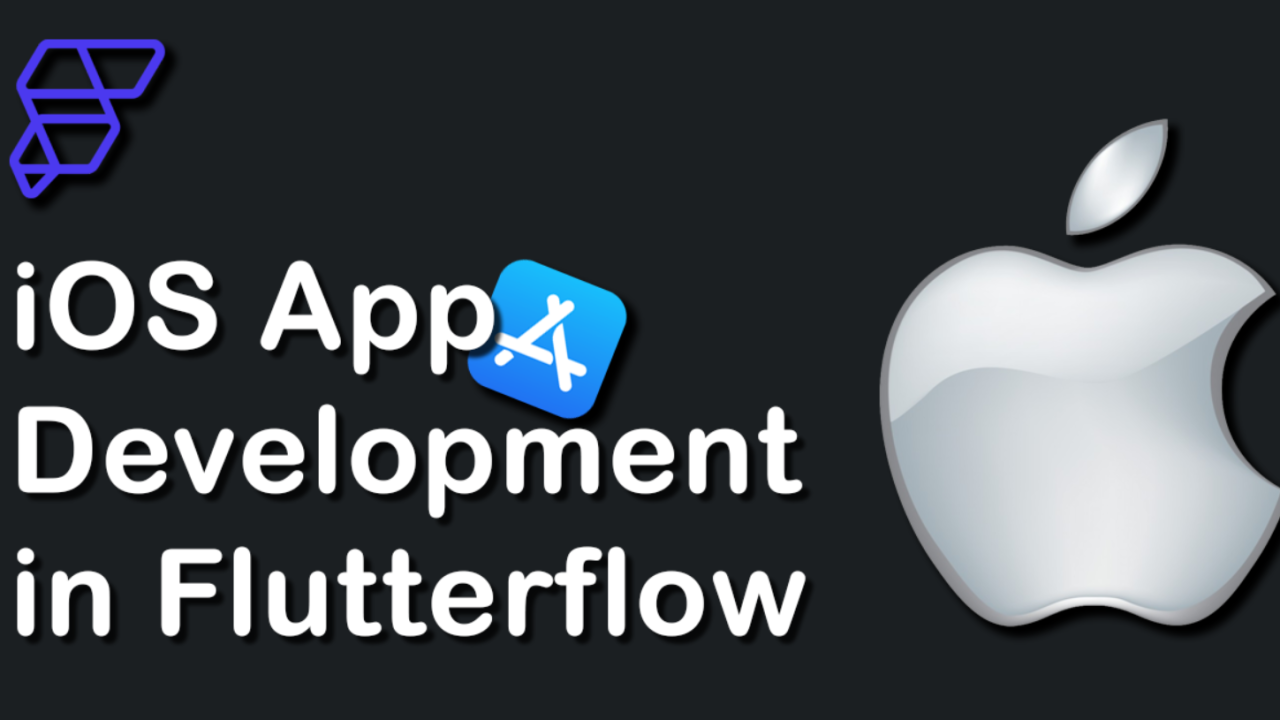Unleashing the Potential: The Power of FlutterFlow for iOS App Development
Posted on 18 November, 2023 by Flutterflow devs

In the dynamic landscape of mobile app development, staying ahead often requires embracing innovative tools and platforms. FlutterFlow, a rising star in the realm of app development, has been gaining traction for its ability to streamline the process and deliver powerful results. In this article, we'll explore the capabilities and advantages of flutterflow ios specifically tailored for iOS app development.
The Rise of FlutterFlow:
1. A Visual Development Platform: FlutterFlow stands out as a visual development platform that empowers developers and entrepreneurs to create feature-rich applications without extensive coding. Its user-friendly interface and drag-and-drop functionality make it accessible to both seasoned developers and those new to the app development arena.
2. Integration of Flutter: At the core of FlutterFlow is Flutter, an open-source UI software development toolkit created by Google. Flutter allows for the development of natively compiled applications for mobile, web, and desktop from a single codebase. FlutterFlow harnesses this power, offering a streamlined and efficient development experience.
Key Features of FlutterFlow for iOS App Development:
1. Cross-Platform Compatibility: One of the significant advantages of FlutterFlow is its ability to facilitate cross-platform development. With a single codebase, developers can create applications that seamlessly run on both iOS and Android devices, reducing development time and effort.
2. Visual Design Interface: FlutterFlow's visual design interface allows developers to build and design UI elements by simply dragging and dropping components. This intuitive approach expedites the design process and provides a real-time preview of the app's appearance.
3. No-Code Functionality: While catering to developers with coding expertise, FlutterFlow also offers a no-code functionality that enables individuals without extensive coding experience to build and launch applications. This democratization of app development opens doors for a broader audience to bring their ideas to life.
4. Pre-built UI Components: FlutterFlow comes equipped with a library of pre-built UI components that can be easily customized to suit the specific needs of an iOS app. This not only accelerates development but also ensures a polished and professional look for the end product.
5. Real-Time Collaboration: Collaboration is streamlined with FlutterFlow's real-time collaboration features. Multiple team members can work on the same project simultaneously, fostering efficient communication and coordination during the development process.
Advantages of Using FlutterFlow for iOS App Development:
1. Rapid Prototyping: FlutterFlow's visual design interface and pre-built components facilitate rapid prototyping, allowing developers to quickly visualize and iterate on the app's design and functionality.
2. Cost-Effective Development: The ability to create cross-platform applications with a single codebase significantly reduces development costs. Businesses can reach a wider audience without the need for separate development teams for iOS and Android.
3. Time Efficiency: The streamlined development process, visual design interface, and extensive library of pre-built components contribute to increased efficiency. Developers can bring iOS apps to market faster, keeping up with the ever-evolving demands of the industry.
4. Seamless Integration: FlutterFlow seamlessly integrates with various third-party services and APIs, allowing developers to incorporate a wide range of functionalities into their iOS apps. This flexibility enhances the overall user experience.
5. Scalability: FlutterFlow is designed to accommodate projects of varying scales. Whether you're a solo developer working on a small project or part of a team developing a large-scale application, FlutterFlow provides the tools and scalability to meet diverse needs.
Challenges and Considerations:
1. Learning Curve: While FlutterFlow simplifies many aspects of app development, there may be a learning curve for those new to the platform, especially if they are accustomed to traditional coding methods.
2. Customization Limitations: While pre-built components expedite the development process, developers may face limitations when it comes to highly customized UI elements or complex functionalities that require extensive coding.
Future Implications:
1. Market Growth: As FlutterFlow continues to evolve, its impact on the market is expected to grow. The platform's ability to democratize app development and cater to a broad audience positions it as a key player in the future of mobile app development.
2. Expanded Feature Set: The FlutterFlow team is actively working on expanding the platform's feature set, addressing user feedback, and enhancing its capabilities. This ongoing development suggests a promising future for FlutterFlow in the app development landscape.
Conclusion:
FlutterFlow's emergence as a powerful tool for iOS app development underscores the industry's constant pursuit of innovation and efficiency. Its combination of visual design capabilities, cross-platform functionality, and user-friendly interface positions it as a valuable asset for developers and businesses looking to create impactful iOS applications. As FlutterFlow continues to mature and adapt to the ever-changing demands of the industry, it stands poised to play a significant role in shaping the future of mobile app development.
For more details, visit us :
http://priyawarrickfinishingschool.com
5 January, 2017